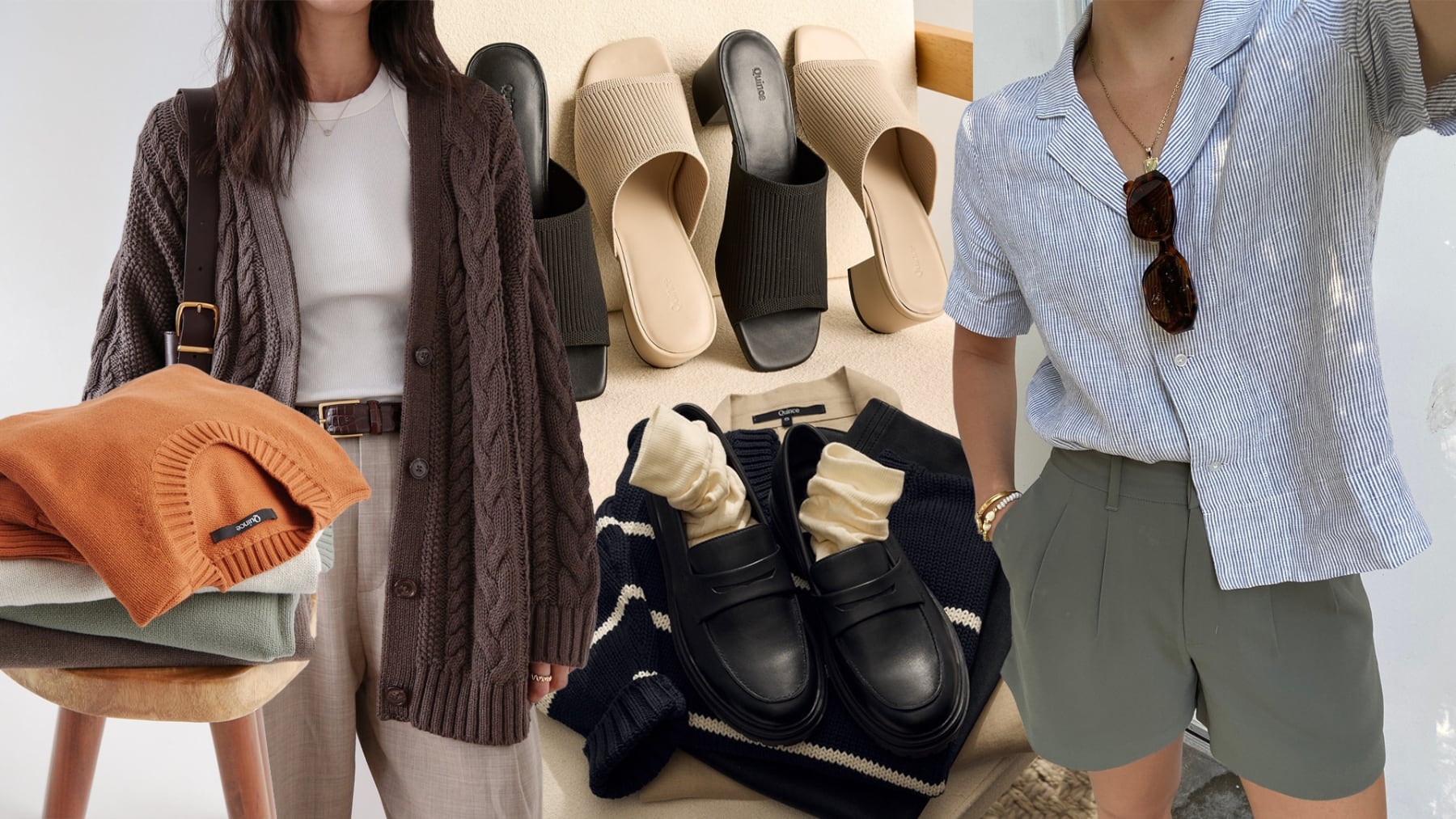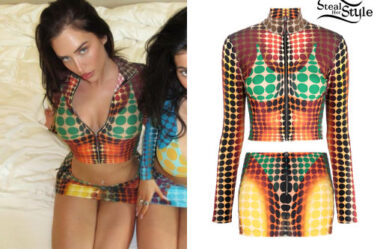
This past February, the world of surprisingly affordable cashmere was rocked by a scandal.
In a series of TikTok posts, cashmere label Naadam blasted rival Quince, which sells unbranded basics like sweaters and button-downs, over social media ads that claimed its $50 sweaters were comparable, if not better, quality than Naadam’s $100 options.
“We’ve seen this brand, Quince, use our name in their marketing. I don’t know if it’s illegal, but I know that it is strange,” Naadam co-founder and chief executive Matt Scanlan told Glossy in February. “It does cross a line.”
Competitors may not love Quince’s nearly ostentatious marketing tactics, but it seems they’re working. In 2023, the five-year-old start-up’s annual sales tripled to around $300 million, according to people familiar with the matter. This year, it aims to triple sales again, this time to $1 billion, the people said.
The company’s ubiquitous social media ads have helped, but a big reason Quince has managed to break through is that it’s one of a handful of retail start-ups still courting middle-class shoppers at a time when many of the most successful retailers are laser-focused on catering to the 1 percent or offering rock bottom prices.
Brands like Quince and Italic, which also sells relatively affordable, unbranded basics, have taken the fast-fashion playbook of copying luxury aesthetics but promising customers a quality they won’t find at Shein or Temu. While that promise comes with a higher price tag, it still reads as a bargain to some shoppers, particularly those who can no longer afford the real thing. Italic, which launched in 2018, sells a $170 Mongolian cashmere sweater made in the same factories producing similar-looking garments that cost upwards of $2,000 at Brunello Cucinelli. As luxury brands have raised prices to attract wealthier consumers, more shoppers are seeking dupes without the stigma that comes with Shein hauls.
Critics say these start-ups lack their own defining aesthetic, and are dependent on ad blitzes to draw customers. The dupe trend’s longevity is also up for debate; consumers may shell out again for the real thing when they’re feeling more financially secure. Still, brands struggling to compete with fast fashion can glean lessons from the ways that Quince and Italic make the case that their brand is worth it, whatever form that takes.
“How big can a brand get without having a really defined brand identity? Conventional wisdom would say that a strong brand identity and strong storytelling is really important,” said James Nord, founder and chief executive of influencer marketing agency Fohr. “But the world is changing so quickly that that may no longer be the case. Maybe you don’t need to really tell a brand story. You just need to be really clear in your value prop and nail that.”
Revising an Old Playbook
There’s nothing particularly innovative about Quince’s marketing; brands have always sought a leg up by claiming superior quality, better prices, or both. Duplicating a better-known brand’s products is nothing new, either.
Where Quince and Italic take the formula a step further is by building their brands around that “same, but cheaper” pitch. Both sell elevated basics made in the same factories as higher-end competitors. Quince even scrapes other brands’ websites — including Aritzia and Everlane — to identify and duplicate their most viewed and purchased products, according to a person familiar with the matter.
“Folks believe they’re getting a phenomenal product [and] they know they’re not having to break their bank to do it,” said Vic Drabicky, founder of media agency and consultancy January Digital.
No matter the quality, industry insiders say Quince’s growth likely wouldn’t be possible if it weren’t for its heavy spending on social media ads. Quince has raised over $100 million from serial e-commerce investors — including GGV Capital and Insight Partners — that typically give brands money to chase growth through paid ads.
“Quince’s real superpower is performance marketing,” said Brian Sugar, founder and managing partner of Sugar Capital, who has invested in Everlane, Olive & June and Savage X Fenty. “I’d imagine they could use that superpower on other categories if they chose to.”
But start-ups today can’t inundate consumers with social media ads to grow sales without clearly communicating the value of their products. The concept of “same factory, better price” can create high expectations for consumers: Product reviews on forums like Reddit are decidedly mixed on whether Quince’s materials are as good as they claim.
The stakes are high to keep consumers coming back for moderately priced brands, which tend to have thinner margins and less room to invest in brand marketing with little impact on their sales in the short-term, Drabicky said. Once a customer buys and likes the product, they’re more likely to spread the word about the brand to other people who will then click on its ads. Quince’s earned media value – a measure of social media buzz — jumped more than 300 percent from June 2023 to May 2024 as more creators on social media talked about the brand in non-sponsored posts, according to data from influencer marketing platform CreatorIQ.
“Whether people like that [price] comparison or not, what it does is it frames the conversation for the consumer,” Drabicky added.
Making It Last
Brands that are buoyed by a tough economy risk short-lived success if they’re unable to retain those customers long-term. That requires more than offering good prices.
Retention is one of Italic’s biggest priorities. The company has a monthly subscription model, where consumers pay $60 a year for benefits like exclusive product drops, discounts and free shipping. It now has more than 10,000 members and generates over 50 percent of its sales, on average, from repeat customers, Jeremy Cai, founder and chief executive at Italic, told The Business of Fashion in June.
Italic’s wide range of product categories also drives retention. In addition to sweaters, the company sells homeware — from $40 sateen pillowcases to $120 chef knives — which now accounts for 60 percent of total sales, said Avi Arora, Italic’s head of growth and marketing. When categories outside of the core offering perform well, it’s a sign that consumers trust the brand, Drabicky said. Italic expects to end the year with net profits and sales up 50 percent.
“It’s up to us to bring some uniqueness to our customers and give them both an experience and a product that they truly resonate and fall in love with … and use that to build our brand up” Arora said.
Brands with established names have found ways to pitch their values to price sensitive customers without relying on exact dupes from other brands. Mall stalwart Abercrombie & Fitch, for example, shedded its exclusionary reputation to become a destination for affordable and trendy styles. In May, the company said it expects full-year sales to jump 10 percent year over year to $4.7 billion, up from the previously expected 6 percent increase.
But the success of companies like Quince and Italic shows that start-ups today are still capable of disrupting the market if they can convince consumers why they should choose them over competitors.
“A lot of consumer brands got a bit lazy and stopped really thinking about the customer,” Fohr’s Nord said. This is “a call to rethink how they are telling their story and also the kinds of products that they’re making and their pricing strategy.”



